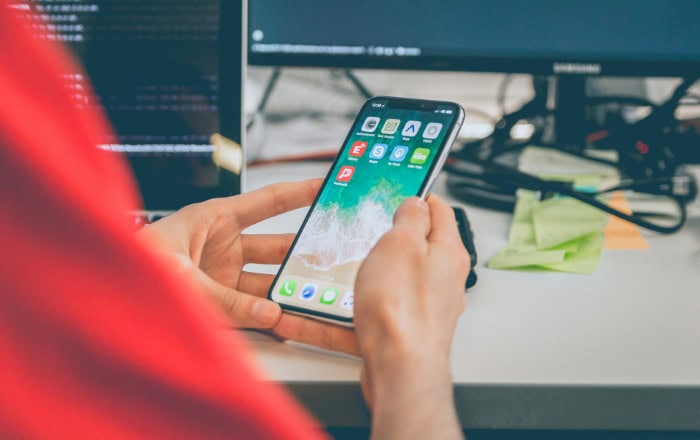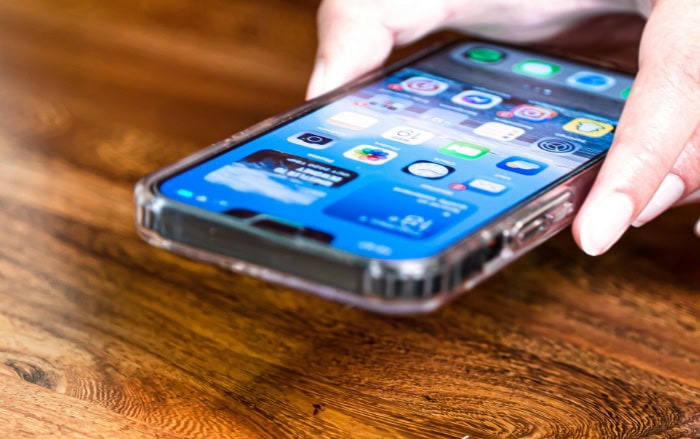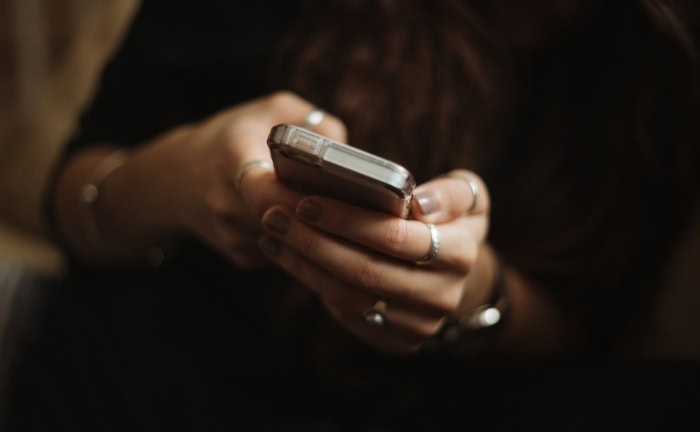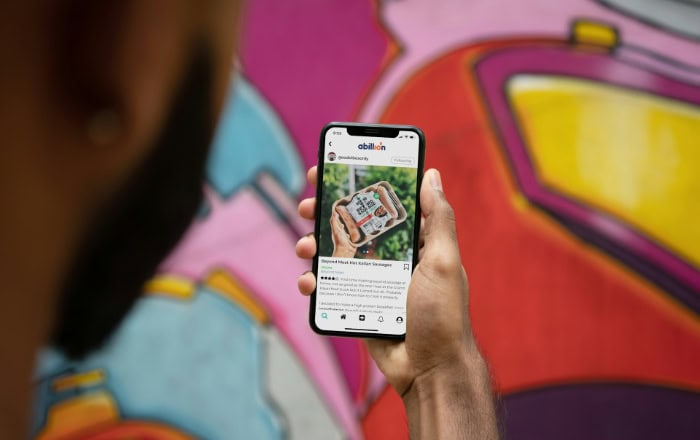How to Change the IP Address on Your iPhone: Quick Tips

Your iPhone's IP address acts as its digital fingerprint, identifying your device on the internet. While it usually works seamlessly in the background, there are times when you might need to change it.
Perhaps you want to protect your online privacy, bypass geo-restrictions, or troubleshoot network issues. Changing your iPhone's IP address can open up a world of possibilities and give you more control over your online experience.
Methods to Change Your iPhone's IP Address
There are several ways to change your iPhone's IP address, each with its own advantages and use cases.
Using a VPN
A Virtual Private Network (VPN) is one of the most popular and effective ways to change your iPhone's IP address. When you connect to a VPN, it creates a secure, encrypted tunnel between your device and the VPN server.
This process masks your original IP address and replaces it with the IP address of the VPN server, effectively hiding your online identity and location.
To use a VPN on your iPhone, you'll need to select a reliable VPN service. Look for a provider that offers a wide range of server locations, strong encryption, and a user-friendly app.
Some reputable VPN providers include ProtonVPN, Windscribe, and Mullvad.
Here's a step-by-step guide to using a VPN on your iPhone:
- Download and install the VPN app from the App Store.
- Open the app and sign in or create an account.
- Select a server location from the list of available options.
- Tap the “Connect” button to establish a VPN connection.
- Once connected, your iPhone's IP address will be replaced with the IP address of the VPN server.
Manually Configuring Network Settings
Another way to change your iPhone's IP address is by manually configuring your network settings. This method is particularly useful if you need to set up a static IP address or change your private IP address within your local network.
To change your private IP address:
- Go to “Settings” > “Wi-Fi”.
- Tap the “i” icon next to your connected Wi-Fi network.
- Tap “Configure IP” and select “Manual”.
- Enter your desired IP address, subnet mask, router, and DNS server information.
- Tap “Save” to apply the changes.
To set up a static IP address, follow the same steps as above, but instead of entering a new IP address, use the one assigned by your router or network administrator.
Renewing DHCP Lease
If you're experiencing network connectivity issues or your iPhone is not receiving a proper IP address from your router, renewing your DHCP lease might help. DHCP (Dynamic Host Configuration Protocol) is responsible for automatically assigning IP addresses to devices on a network.
To renew your DHCP lease on an iPhone:
- Go to “Settings” > “Wi-Fi”.
- Tap the “i” icon next to your connected Wi-Fi network.
- Tap “Renew Lease” and confirm by tapping “Renew Lease” again.
Your iPhone will request a new IP address from the router, which can help resolve connectivity issues and potentially change your IP address.
Using Proxy Servers
Proxy servers act as intermediaries between your iPhone and the internet. When you configure your iPhone to use a proxy server, your internet traffic is routed through the proxy, which can change your apparent IP address and location.
There are two main types of proxies: HTTP and SOCKS. HTTP proxies are designed to handle web traffic, while SOCKS proxies can handle various types of internet traffic, including web browsing, email, and FTP.
To configure proxy settings on your iPhone:
- Go to “Settings” > “Wi-Fi”.
- Tap the “i” icon next to your connected Wi-Fi network.
- Scroll down and tap “Configure Proxy”.
- Select either “Manual” or “Auto” configuration.
- If you choose “Manual”, enter the proxy server's IP address and port number.
- If you choose “Auto”, enter the URL of the proxy auto-configuration (PAC) file.
- Tap “Save” to apply the changes.
Keep in mind that free proxy servers may be unreliable, slow, or even compromise your security. It's essential to use trusted proxy servers or consider using a VPN service instead.
Advanced Techniques and Considerations

In addition to the methods discussed earlier, there are some advanced techniques and considerations to keep in mind when changing your iPhone's IP address.
Changing IP Address Through Cellular Networks
While most of the methods we've discussed so far apply to changing your IP address when connected to Wi-Fi networks, there are also ways to change your IP address when using cellular data.
One simple method is to enable Airplane Mode on your iPhone, wait a few seconds, and then disable it again. This process will force your iPhone to disconnect from the cellular network and reconnect, potentially assigning a new IP address in the process.
Here's how to do it:
- Open the Control Center on your iPhone by swiping down from the top-right corner (on iPhone X and later) or swiping up from the bottom of the screen (on iPhone 8 and earlier).
- Tap the Airplane Mode icon to enable it.
- Wait for 5-10 seconds.
- Tap the Airplane Mode icon again to disable it.
Another option is to contact your mobile carrier and request a new IP address. This process may vary depending on your carrier, and not all carriers will be willing or able to assign a new IP address upon request.
However, if you have a compelling reason, such as experiencing issues with your current IP address, it's worth reaching out to your carrier's customer support for assistance.
Impact of Changing IP on Network Performance and Connectivity
While changing your iPhone's IP address can offer benefits like enhanced privacy and access to geo-restricted content, it's important to consider the potential impact on your network performance and connectivity.
When using a VPN or proxy server, your internet traffic is routed through an additional server before reaching its destination. This extra step can sometimes result in slower connection speeds, increased latency, or even connectivity issues, especially if the VPN or proxy server is experiencing high traffic or is located far from your physical location.
Additionally, some websites and online services may block or restrict access from certain IP addresses or ranges, particularly those associated with VPNs or proxy servers. This can lead to difficulties accessing certain content or using specific features of these services.
To minimize the impact on network performance and connectivity, choose a reputable VPN or proxy service with servers located close to your physical location, and opt for a paid service that offers faster speeds and more reliable connections.
Benefits and Use Cases for Changing Your iPhone's IP

Changing your iPhone's IP address offers a range of benefits and practical use cases. From enhancing your online privacy and security to bypassing geo-restrictions and troubleshooting network issues, adjusting your IP address can help you take control of your online experience.
Enhancing Online Privacy and Security
One of the primary reasons to change your iPhone's IP address is to enhance your online privacy and security. When you browse the internet, your IP address can reveal information about your location, internet service provider, and online activities. This information can be used by websites, advertisers, and even malicious actors to track your behavior and target you with unwanted content or attacks.
By changing your IP address, you can mask your true location and identity, making it more difficult for third parties to track your online activities. This is particularly important when using public Wi-Fi networks, which are often unsecured and can leave your data vulnerable to interception by hackers.
Using a VPN to change your IP address offers an additional layer of security by encrypting your internet traffic. This encryption ensures that even if someone intercepts your data, they won't be able to read or use it without the proper decryption key.
Bypassing Geo-Restrictions and Censorship
Another significant benefit of changing your iPhone's IP address is the ability to bypass geo-restrictions and censorship. Many websites and online services use IP addresses to determine your location and restrict access to certain content based on that information.
This can be frustrating if you're trying to access content that's only available in specific regions or if you're traveling abroad and want to use services from your home country.
By changing your IP address to one associated with a different location, you can trick these websites and services into thinking you're accessing them from an allowed region. This process is known as “geo-spoofing” and is commonly used to access region-locked streaming services, online gaming platforms, and other content that may be restricted in your current location.
Similarly, changing your IP address can help you bypass censorship and access websites that may be blocked by your government or internet service provider. By connecting to a VPN server in a different country, you can circumvent these restrictions and access the content you need.
Troubleshooting Network Issues
In some cases, changing your iPhone's IP address can help troubleshoot network issues and improve your overall internet connectivity. If you're experiencing problems like slow speeds, frequent disconnections, or inability to access certain websites, the issue may lie with your current IP address.
By renewing your DHCP lease or manually configuring a new IP address, you can potentially resolve these issues and restore proper network functionality. This is particularly useful if your iPhone is assigned an IP address that's already in use by another device on the network, causing an IP conflict.
Additionally, if your iPhone's IP address has been blocked or blacklisted by a website or online service due to suspicious activity or other reasons, changing your IP address can help you regain access to these resources.
Accessing Region-Locked Content and Services
Finally, changing your iPhone's IP address can help you access region-locked content and services that may not be available in your current location. This is particularly useful for streaming services like Netflix, Hulu, and BBC iPlayer, which offer different content libraries depending on your geographic region.
By using a VPN or proxy server to change your IP address to one associated with the desired location, you can unlock access to these region-specific content libraries and enjoy a wider range of entertainment options.
Similarly, changing your IP address can help you access online services that may be restricted or unavailable in your country, such as certain social media platforms, messaging apps, or online marketplaces. By connecting to a server in a country where these services are available, you can bypass these restrictions and use the services as if you were physically located in that region.
Potential Risks and Challenges

While changing your iPhone's IP address can offer numerous benefits, it's important to be aware of the potential risks and challenges associated with this process.
Impact on Online Services and App Functionality
One potential risk of changing your iPhone's IP address is the impact it can have on online services and app functionality. Some websites and apps may rely on your IP address to determine your location, personalize content, or enforce security measures.
When you change your IP address, these services may not function as intended or may even block your access entirely.
For example, if you use a VPN to change your IP address to a different country, you may find that certain apps or websites display content in a different language or currency. Similarly, some online banking services or e-commerce platforms may flag your account for suspicious activity if they detect a sudden change in your IP address, potentially leading to account lockouts or additional security checks.
To minimize these risks, it's important to choose a reputable VPN or proxy service that offers reliable connections and compatibility with a wide range of apps and services. Additionally, be prepared to switch back to your original IP address if you encounter any issues with specific apps or websites.
Security Risks Associated with Free VPNs and Proxies
Another significant risk to consider when changing your iPhone's IP address is the potential security threats associated with free VPNs and proxy services. While these services may be tempting due to their no-cost nature, they often come with hidden dangers that can compromise your online privacy and security.
Free VPNs and proxies may engage in questionable practices like logging your browsing activity, selling your data to third parties, or injecting ads into your internet traffic. Some may even contain malware or other malicious code that can infect your iPhone and steal sensitive information.
Moreover, free services often have limited server options, slower connection speeds, and more frequent disconnections compared to paid alternatives. This can make them unreliable for tasks that require a stable and secure connection, such as online banking or accessing confidential work documents.
To protect yourself from these security risks, it's crucial to choose a reputable, paid VPN or proxy service that prioritizes user privacy and security. Look for services that offer strong encryption, a clear no-logging policy, and regular security audits to ensure the integrity of their infrastructure.
Troubleshooting Common Issues When Changing IP Addresses
Even with the best precautions, you may encounter issues when changing your iPhone's IP address. Some common problems include:
- Slow connection speeds: VPNs and proxies can sometimes slow down your internet connection due to the additional encryption and routing involved. To mitigate this issue, choose a server location closer to your physical location and opt for a paid service with faster infrastructure.
- App compatibility issues: Some apps may not function properly when using a VPN or proxy, either due to security measures or geographic restrictions. If you encounter problems with a specific app, try whitelisting it in your VPN settings or temporarily disabling the VPN to see if the issue resolves.
- DNS leaks: In some cases, your iPhone may still send DNS requests outside of the VPN tunnel, potentially exposing your true IP address and location. To prevent this, ensure your VPN has built-in DNS leak protection or manually configure your iPhone to use the VPN's DNS servers.
- Connection drops: VPNs and proxies may occasionally drop the connection, leaving your traffic unprotected. Look for services with automatic kill switches that block internet access if the VPN connection fails, ensuring your IP address remains hidden.
Conclusion
Changing your iPhone's IP address can be a powerful tool for enhancing your online privacy, bypassing geo-restrictions, troubleshooting network issues, and accessing a wider range of content and services. By using methods like VPNs, manual network configuration, and proxy servers, you can take control of your online identity and tailor your internet experience to your needs.
However, it's crucial to approach the process of changing your IP address with caution and awareness. Choosing a reputable VPN or proxy service, understanding the potential impact on app functionality, and being prepared to troubleshoot common issues can help you navigate the risks and challenges associated with this process.
As you embark on your journey to change your iPhone's IP address, remember that the benefits can be significant, but the risks should not be overlooked. By staying informed, using reliable tools, and prioritizing your online security, you can enjoy the advantages of a changed IP address while minimizing the potential drawbacks.


